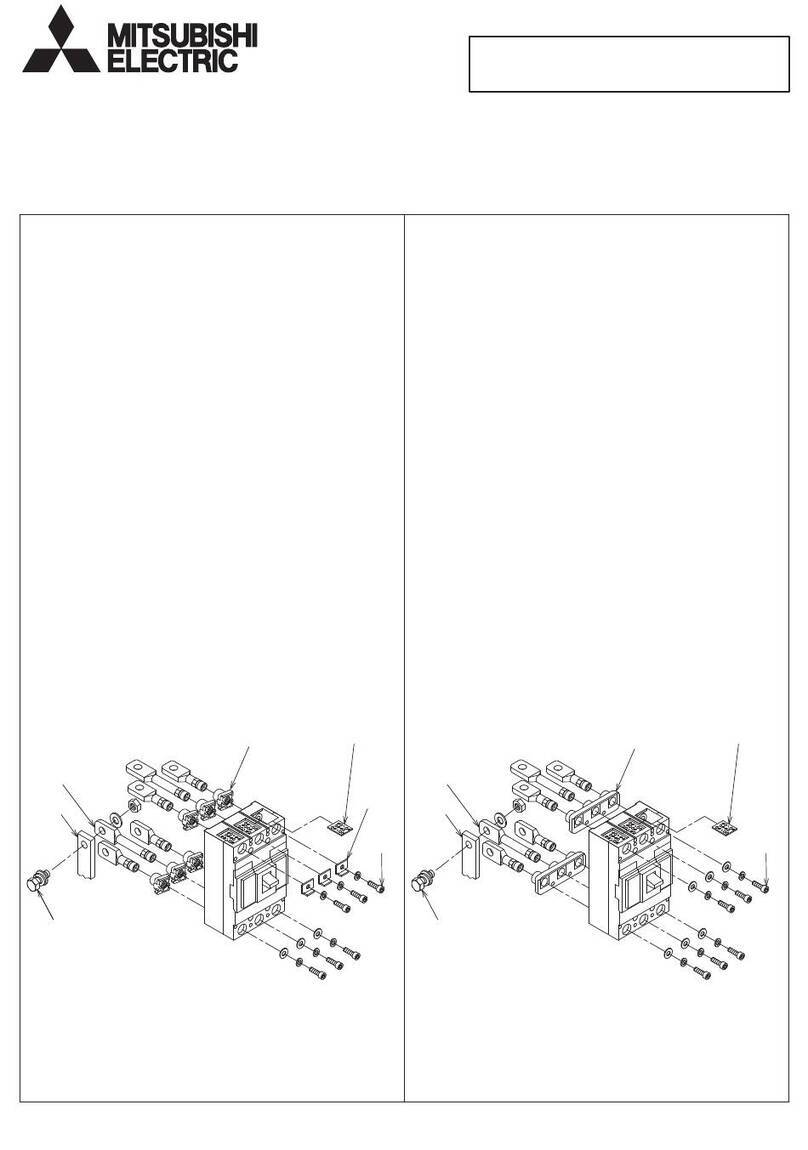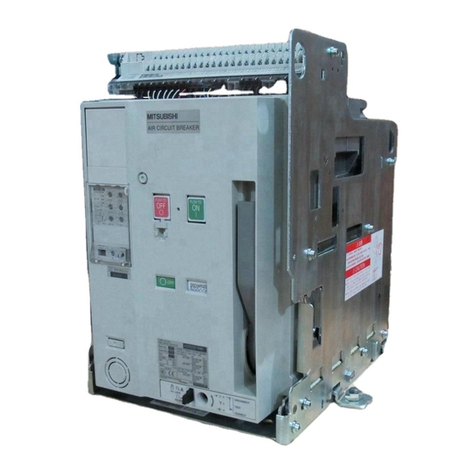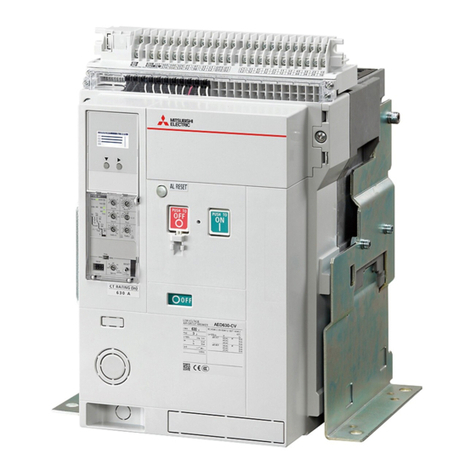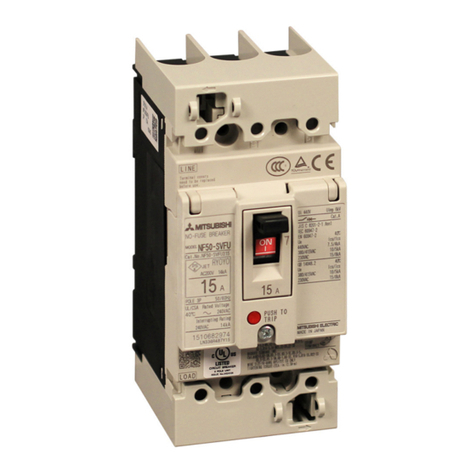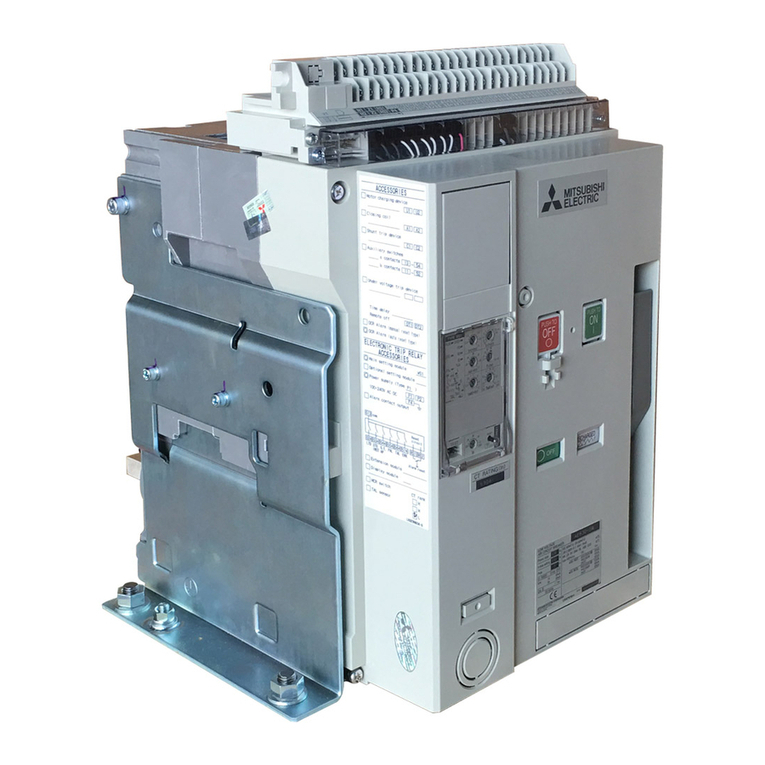
4 5
Warranty
Warranty
11
(2) The products listed in this catalogue are designed and manufactured as general-purpose products for application
to the general industry field. Therefore, the warranty does not apply to the following special uses.
[1] The use that has a significant influence on the public facilities such as nuclear power plants and other power
plants of power companies.
[2] The use for railway companies, government offices, etc. that require to build the special quality assurance system.
[3] The use for aerospace equipment, medical equipment, railway equipment, combustion and fuel equipment,
passenger vehicles, manned transportation equipment, recreational equipment, safety equipment, and air
conditioner for servers and the cooling facilities that are expected to have a significant influence on life, body,
and property.
If the products listed in this catalogue are used for the above mentioned special uses, Mitsubishi Electric does not
take any responsibility for the quality, performance, and safety of the product, which includes, but is not limited
to, default liability, defect liability, quality assurance liability, tort liability, and product liability. However, in case the
special quality (beyond general specifications) is not required and the use is a limited purpose and the backup/
fail-safe functions are equipped with the facility, Mitsubishi Electric may determine that the products listed in this
catalogue can be guaranteed. For details, consult a distributor or Mitsubishi Electric.
Warranty
Changes in product specications
The specifications of the product listed in this catalogue, manuals or technical documents are subject to change without
prior notice.
Warranty period and warranty coverage
If any faults or defects (hereinafter “Failure”) found to be the responsibility of Mitsubishi Electric occurs during use
of the product within the warranty period, the product shall be repaired at no cost via the sales representative or
Mitsubishi Electric Sales office. However, if repairs are required on-site at domestic or overseas locations, expenses
to send an engineer will be charged.
1. Warranty period
The free guarantee period of the product is one year from the day of purchase.
2. Warranty coverage
(1) The primary failure diagnosis should be performed by users. However, if required by users, Mitsubishi Electric
or Mitsubishi Electric Service Company may be able to perform the diagnosis. In that case, for damages caused
by any cause found to be the responsibility of Mitsubishi Electric, the diagnosis will be performed at no cost. For
details, contact a distributor.
(2) The coverage shall be limited to ordinary use within the usage state, usage methods, usage environment, and
other conditions which follow the instructions and precautions given in the instruction manual, user’s manual, and
caution labels on the product.
(3) Even within the warranty period, repair cost shall be charged for the following cases.
[1] Failure occurring from inappropriate storage or handling, carelessness or negligence by the user. Failure
caused by selection of hardware or software design on the user side.
[2] Failure caused by modifications, etc. to the product by the user without any approvals from Mitsubishi Electric.
[3] In case Mitsubishi Electric product is assembled into a user’s device, failure that could have been avoided if
functions or structures, judged as necessary in the legal safety measures the user’s device is subject to or as
necessary by industry standards, had been provided.
[4] Failure that could have been avoided if the maintenance described in the user’s manual has been performed.
[5] Failure caused by external irresistible forces such as fires or abnormal voltages, and failure caused by natural
disasters such as earthquakes, lightning, wind and water damages.
[6] Failure caused by reasons unpredictable based on scientific technology standards at the time of shipment
from Mitsubishi Electric.
[7] Any other failure found not to be the responsibility of Mitsubishi Electric or that admitted not to be so by the user.
In addition, the warranty applies only to the product delivered. It does not apply to the damage that is caused by the
failure of the product.
3. The period to supply the spare parts after discontinuation of production
Mitsubishi Electric shall supply spare parts for five years after discontinuation of production.
After five years, Mitsubishi Electric shall supply spare parts until the spare parts run out of stock.
Exclusion of loss in opportunity and secondary loss from warranty liability
Regardless of the warranty period, Mitsubishi Electric shall not be liable for compensation to:
(1) Damages caused by any cause found not to be the responsibility of Mitsubishi Electric.
(2) Loss in opportunity, lost profits incurred to the user by failures of Mitsubishi Electric product.
(3) Damages whether foreseeable or not, secondary damages, compensation for accidents, and compensation for
damages to products other than Mitsubishi Electric products, caused by exceptional situations.
(4) Compensation for cost occurring secondarily from replacement work by the user, maintenance of on-site
equipment and start-up test run and other operations.
Product applications
(1) When using the products listed in this catalogue, the following conditions must be confirmed and obeyed. The
product must be used so that a failure that occurs to the product does not lead to a serious accident. When a
damage or failure occurs, the external backup function or fail-safe function must be executed systematically.
Safety precautions
• Before using this product, read “Safety precautions” and the user’s manual carefully and use it correctly.
• Important safety instructions are given below. Strictly observe the instructions.
• Be sure to instruct the end user with these safety precautions.
• Do not use the product under the conditions with over-rated current. Otherwise, ground-fault or short circuit
fault could occur due to dielectric breakdown, or explosion could occur due to a short circuit protection failure.
• Do not touch terminal area. There is a risk of electrical shock.
DANGER
• The electrical work shall be performed by qualified personnel (electrical expert).
• Inspection and maintenance should be performed by qualified personnel (electrical expert). Before performing
wiring works, turn off the upstream circuit breaker. Failure to do so may expose you to electrical shock.
• Tighten the terminal screw with the torque specified in the instruction manual. Failure to do so may cause a fire.
• Do not install or store in an abnormal environment with high temperature, high humidity, dust, corrosive gas,
vibrations, or shocks, etc. To do so may cause a fire, malfunction of the circuit breaker or make it inoperative.
• Protect the circuit breaker so that foreign particles, such as dust, concrete powder and iron powder, and rain
water will not enter the circuit breaker. Failure to do so may cause malfunction or fire.
• When the circuit breaker trips automatically, remove the cause before turning on the handle. Failure to do so
may cause an electric shock or a fire.
• Retighten the terminals periodically. Failure to do so may cause a fire.
• Use the product in 50/60 Hz. Failure to do so may cause malfunction, inoperativeness or fire.
• Dispose of the product as industrial waste.
CAUTION
Meaning of indications
Incorrect handling of the product will result in a hazardous situation,
such as death or serious injury.
Incorrect handling of the product may result in a hazardous situation
according to circumstances.
Warning for possible outbreak of a fire under certain conditions.
This means prohibition. Never ignore this instruction.
DANGER
CAUTION
